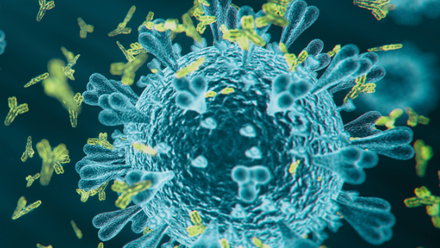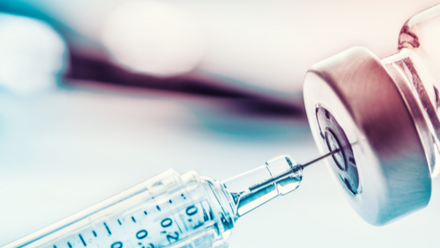Treating COVID patients with oxygen
Why some patients with COVID-19 develop acute respiratory failure and how oxygen including ventilation is used to care for them
COVID-19 patients develop acute respiratory failure when they are unable to get enough oxygen into their bodies. Acute respiratory failure leads a reduction in the transfer of oxygen from the lungs to the vital organs.
There are various ways of treating acute respiratory failure. The primary method is to give oxygen to the patient. This can be done in several ways, including via a simple face mask. Oxygen can also be given via a tight fitting face mask (or a hood) to provide positive pressure; This is called continuous positive airway pressure and can lead to improved levels of oxygen in the blood.
If these methods are unsuccessful in improving blood oxygen levels, the patient may need intubated; This means giving the patient a general anaesthetic and inserting a plastic tube into the patient’s windpipe (trachea), which is then connected by tubing to a mechanical ventilator, sometimes known as a “life support machine”.
Ventilators blow a mixture of air and oxygen into the lungs to attempt to improve blood oxygen levels in people who are unable to breathe for themselves. The timing of when to transfer someone onto mechanical ventilation is a complex decision, and requires an assessment of multiple things including, how tired the patient has become from doing the increased work of breathing when their lungs are not working well, their level of consciousness, and many of measurements (blood oxygen and carbon dioxide levels) that are regularly assessed in patients on ICU.
The most critical component of the decision to proceed to mechanical ventilation is whether it is likely that the cause of the acute respiratory failure is reversible, and that it is likely the patient can be restored to what they would consider an acceptable quality of life after their stay in ICU.
ICS Council member, Dr Charlotte Summers, has created an FAQ to help answer some of the questions around why oxygen and ventilatory support is used to help care for COVID-19 patients Frequently asked questions (FAQ)
What is COVID?
COVID-19 is the disease caused by SARS-CoV-2, a novel coronavirus (similar to MERS-CoV and SARS-CoV). The virus outbreak initially centred in Wuhan, China, but has since spread globally, and was declared to be a pandemic by the World Health Organisation on 11th March 2020. SARS-CoV-2 is thought to be an entirely new virus, not seen by humans before, and therefore everyone is likely to be susceptible.
How is coronavirus infection affecting the lungs?
The virus is transmitted primarily via respiratory droplets (produced by coughing/sneezing). Inhalation of respiratory droplets can deliver viruses straight to the lungs, where they can start the infection. We can also contract the virus by touching surfaces on which the virus is present, and then transferring those viruses to our eyes, mouth, nose etc, where they can gain entry to the body to also cause infection Good hand hygiene and following guidance about social distancing can reduce the likelihood of contracting the virus.
COVID can cause inflammation and swelling of the lung tissues, making it much harder for the oxygen in the lungs to transfer to the red blood cells within the millions of tiny blood vessels (capillaries) that traverse the lungs. The red blood cells travel through these blood vessels to gain oxygen to carry away to the body’s vital organs, and in COVID there is less oxygen available for them to carry.
Why do some people with COVID need to be admitted to hospital?
Some people with COVID have a reduction in the transfer of oxygen from the lungs to the vital organs; There are various ways of treating this lack of oxygen reaching the blood. The primary method is to give oxygen, which can be done in several ways including via a simple face mask. Oxygen can also be given via a tight-fitting face mask (or a hood); This is called continuous positive airway pressure (CPAP) and can lead to improved levels of oxygen in the blood in some people. If these methods are unsuccessful, the patient may need intubated - This means giving the patient a general anaesthetic and inserting a plastic tube into their windpipe (trachea), which is then connected by tubing to a mechanical ventilator, sometimes known as a “life support machine”.
Why do some people with COVID need to be admitted to intensive care?
When people are no longer able to be supported with the equipment available on a regular hospital ward, some patients are transferred to an intensive care unit (ICU). The decision to escalate to the more invasive types of treatment provided by ICU should to take into account a variety of factors including the patient’s views, whether the process that has led to the need for more invasive support is thought to be reversible, and whether there is a realistic chance of supporting the patient to return to what they consider to be an acceptable quality of life. What is mechanical ventilation? Mechanical ventilation is a process whereby a machine blows a mixture of oxygen and air into the lungs of a patient, who is connected to the machine by a plastic tube inserted into their windpipe (trachea). When humans breathe, we suck air into our lungs (negative pressure ventilation), but mechanical ventilation blows the oxygen/air into the lungs (positive pressure ventilation). The human lung can tolerate careful positive pressure ventilation, but it is not without significant side effects.
When is mechanical ventilation used?
Mechanical ventilation is used when a patient is unable to do the work of breathing for themselves. There are multiple causes for it being required, but in the setting of COVID, it is usually due to the patient’s lungs no longer being able to efficiently transfer oxygen from the lungs to the blood to keep the vital organs supplied with the oxygen they need to work.
How do you know when to start or stop mechanical ventilation?
Mechanical ventilation is one of the most invasive procedures carried out in ICU and is not without significant side effects. The timing of when to start mechanical ventilation is a complex decision, and requires an assessment of multiple things including how tired the patient has become from doing the increased work of breathing when their lungs are not working well, their level of consciousness, and many of measurements (including blood oxygen and carbon dioxide levels) that are regularly assessed in patients on ICU. The most critical component of the decision to proceed to mechanical ventilation is whether it is likely that the cause of the acute respiratory failure is reversible, and further, if it is likely the patient can be restored to what they would consider an acceptable quality of life after their stay in ICU. The decision to stop mechanical ventilation is made in two circumstances. Firstly, when it is felt that the person has improved sufficiently to be able to once more cope with doing the work of breathing for themselves, or secondly, when it has become clear that the person being ventilated is no longer going to recover to a quality of life they would consider acceptable.
How does mechanical ventilation make COVID better?
Mechanical ventilation is not a treatment for COVID; it is a supportive therapy that can be provided in certain circumstances (see above) to support an unwell person whilst their body heals itself. There are currently no proven therapies for COVID, but there are several important clinical trials underway in the UK to help us learn what therapies may be of benefit.



